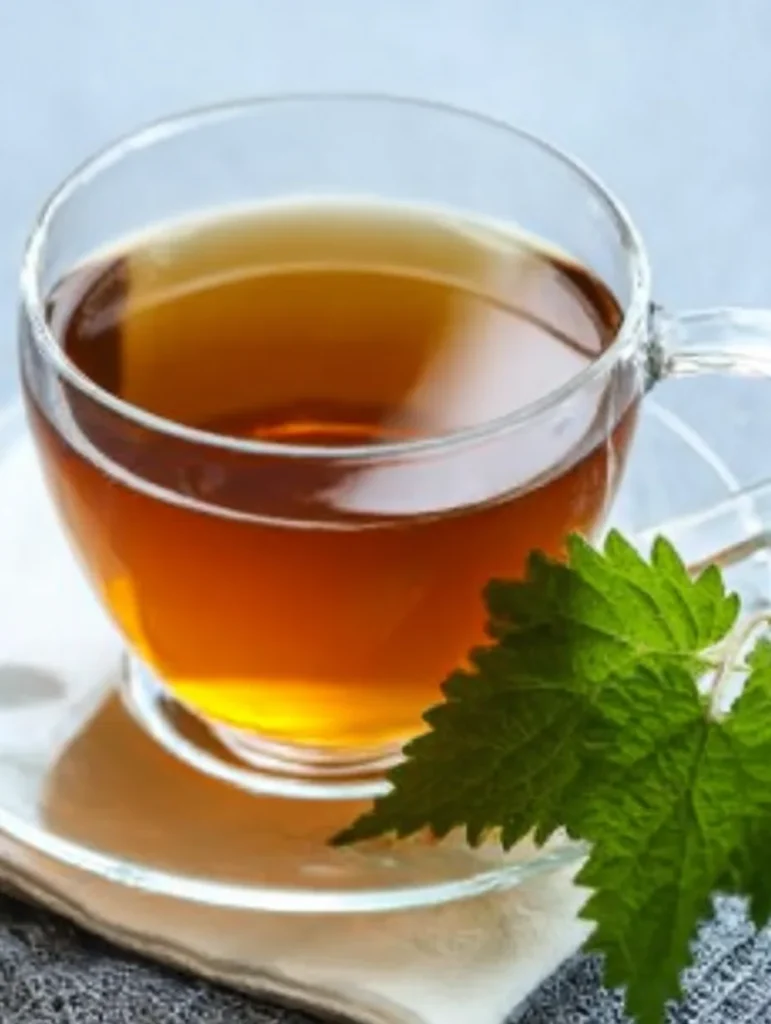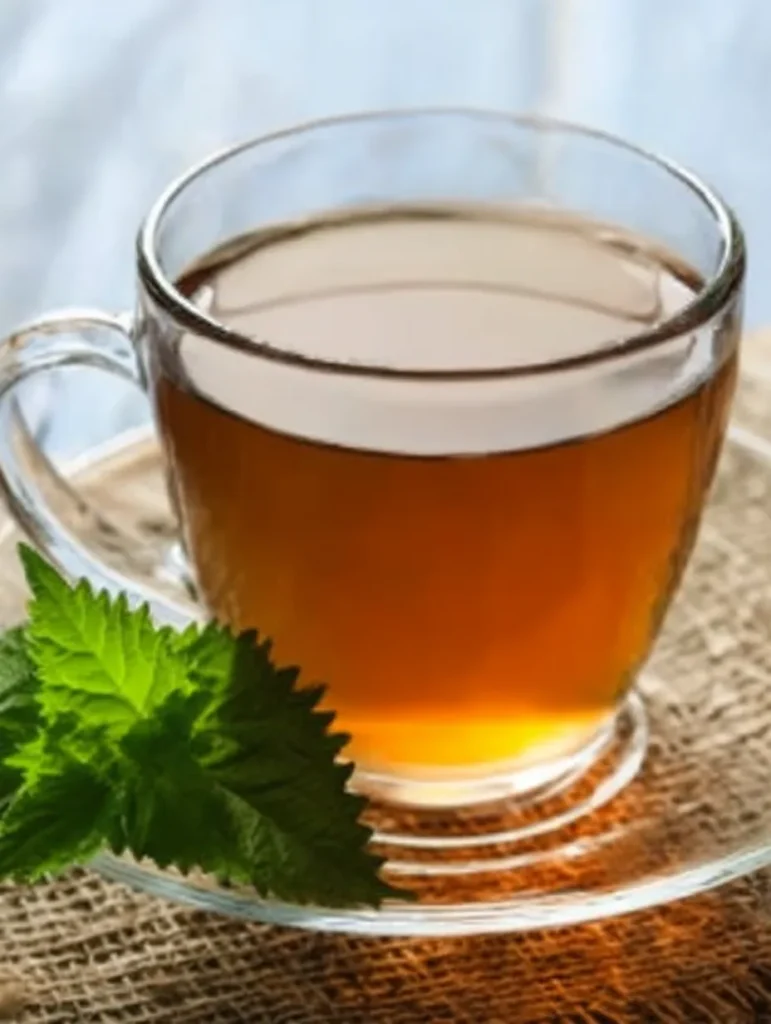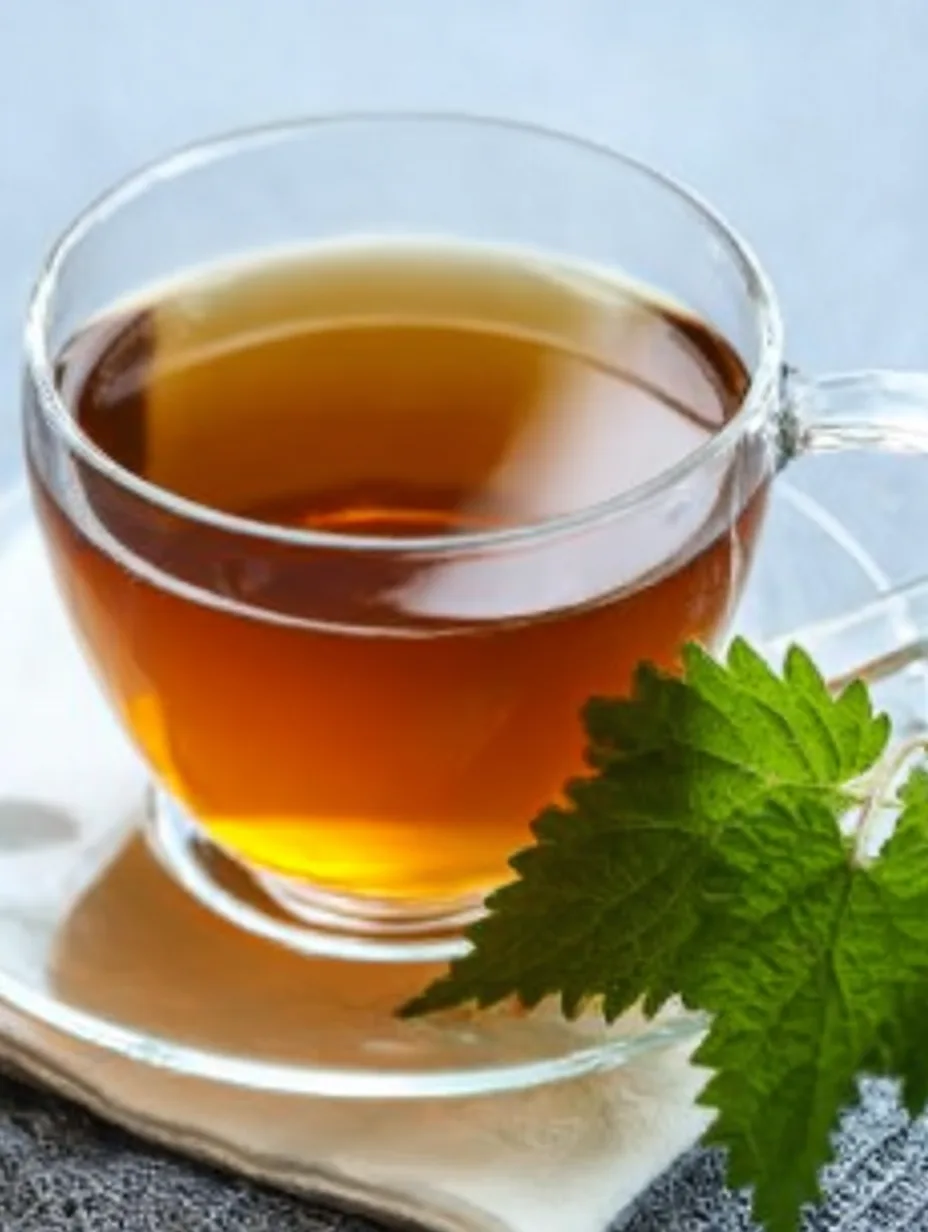Picture this: you’re sitting on your porch, the afternoon sun filtering through the trees, and you’re sipping something that tastes like pure Costa Rican sunshine. That’s exactly what happened to me when I first discovered authentic Costa Rican tea recipes during my trip to San José three years ago. I walked into this tiny café, ordered what looked like regular tea, and boom—my taste buds experienced a tropical vacation they’ll never forget.
Here’s the thing about Costa Rican tea: it’s not just your average cup of Earl Grey. We’re talking about a beverage that combines the country’s incredible biodiversity with centuries-old brewing traditions. Ready to transform your kitchen into a little slice of Central American paradise? Let’s get brewing! 🙂

What Makes Costa Rican Tea So Special?
Ever wondered why Costa Rican tea tastes so different from anything you’ve tried before? The secret lies in the country’s unique terroir and indigenous ingredients that you simply can’t find anywhere else.
Costa Rica sits in this incredible sweet spot between two oceans, creating microclimates that produce some of the world’s most flavorful herbs and spices. The volcanic soil doesn’t hurt either—it’s like nature’s own fertilizer factory. I’ve tried recreating these flavors with store-bought ingredients, and while it’s good, there’s something magical about the authentic Costa Rican experience.
The locals have been perfecting these recipes for generations, passing down secrets that turn simple ingredients into liquid gold. Traditional Costa Rican tea often features hibiscus, lemongrass, ginger, and exotic fruits that grow wild in the rainforest. These aren’t just random ingredients thrown together—each one serves a purpose, creating a symphony of flavors that dance on your palate.

Essential Ingredients for Authentic Costa Rican Tea
Let me break down the key ingredients you’ll need to create that authentic Costa Rican magic in your own kitchen. Trust me, once you stock up on these, you’ll never want to go back to regular tea again.
Primary Base Ingredients
Hibiscus flowers form the backbone of most Costa Rican tea recipes. These ruby-red beauties provide that gorgeous color and tart flavor that makes the tea so refreshing. FYI, you can find dried hibiscus at most health food stores or online.
Fresh ginger root adds warmth and spice that perfectly balances the hibiscus’s tartness. I always keep a chunk of ginger in my freezer—it grates easier when frozen, and you don’t have to worry about it going bad.
Lemongrass brings that citrusy freshness that screams tropical paradise. If you can’t find fresh lemongrass, dried works too, but the fresh stuff really makes a difference.
Flavor Enhancers
- Cinnamon sticks (not ground cinnamon—trust me on this one)
- Fresh mint leaves for that cooling finish
- Lime juice and lime zest for extra zing
- Raw honey or panela (Costa Rican brown sugar) for sweetening
- Pineapple chunks for natural sweetness and tropical flair
Optional Superstar Additions
Want to take your Costa Rican tea to the next level? These ingredients will blow your mind:
- Turmeric root for anti-inflammatory benefits and golden color
- Cardamom pods for exotic warmth
- Star anise for subtle licorice notes
- Fresh orange peel for citrus complexity
The Classic Costa Rican Hibiscus Tea Recipe
Alright, let’s get to the good stuff—the recipe that started my obsession with Costa Rican tea culture. This traditional hibiscus tea recipe serves 4-6 people and takes about 30 minutes from start to finish.
Ingredients You’ll Need
- 1/2 cup dried hibiscus flowers
- 2-inch piece fresh ginger, sliced
- 2 lemongrass stalks, bruised
- 1 cinnamon stick
- 6 cups filtered water
- 2 tablespoons honey or panela
- Juice of 2 limes
- Fresh mint leaves for garnish
- Ice cubes for serving
Step-by-Step Brewing Instructions
Step 1: Prepare Your Aromatics Start by bruising your lemongrass stalks—just give them a good whack with the flat side of a knife. This releases all those amazing oils that make the tea taste like tropical heaven.
Step 2: Create the Base Bring your water to a rolling boil in a large pot. Add the hibiscus flowers, sliced ginger, lemongrass, and cinnamon stick. The kitchen will start smelling like a Costa Rican spa—I’m not even kidding.
Step 3: Simmer and Steep Reduce heat and let everything simmer for 15-20 minutes. You’ll watch the water transform into this gorgeous deep red color that’s almost too pretty to drink. Almost.
Step 4: Strain and Sweeten Strain the tea through a fine-mesh strainer, pressing the solids to extract every drop of flavor. Stir in your honey while the tea is still hot—it dissolves better this way.
Step 5: Add the Magic Once the tea cools slightly, add your fresh lime juice. This is where the magic happens—the tartness balances perfectly with the hibiscus, creating that signature Costa Rican flavor profile.
Step 6: Serve with Style Pour over ice, garnish with fresh mint leaves, and maybe add a lime wheel if you’re feeling fancy. Take that first sip and transport yourself to a hammock on a Costa Rican beach.
Regional Variations and Family Secrets
Here’s where things get really interesting—every region in Costa Rica has its own twist on traditional tea recipes. I’ve collected these variations during my travels, and each one tells a story about the local culture and available ingredients.
The Guanacaste Province Special
In the northwestern province of Guanacaste, they add dried tamarind pods to their hibiscus tea. The result? A complex sweet-and-sour flavor that pairs perfectly with the region’s blazing hot weather. The locals swear it’s the ultimate hangover cure, and after testing this theory myself, I can confirm it works wonders 🙂
Central Valley Garden Blend
The folks in the Central Valley have access to incredible fresh herbs year-round. Their version includes fresh basil leaves and rose petals, creating a floral, aromatic tea that’s absolutely divine. I was skeptical about basil in tea until I tried it—now I’m a convert.
Caribbean Coast Coconut Fusion
Along the Caribbean coast, they incorporate coconut water instead of regular water and add fresh pineapple juice. This creates a creamy, tropical drink that tastes like vacation in a glass. It’s definitely more indulgent than the traditional version, but sometimes you need that extra bit of paradise.
Health Benefits That’ll Make You Feel Good About Your Tea Habit
Let’s be honest—we all love a good excuse to drink more tea, right? Well, Costa Rican tea ingredients happen to be nutritional powerhouses that deliver serious health benefits alongside incredible flavor.
Hibiscus: The Antioxidant Superstar
Hibiscus flowers pack more antioxidants than most berries. These compounds help fight inflammation, support heart health, and may even help regulate blood pressure. I started drinking hibiscus tea regularly about two years ago, and my doctor was impressed with my improved numbers at my last checkup.
Ginger: Your Digestive Best Friend
Fresh ginger aids digestion, reduces nausea, and has powerful anti-inflammatory properties. Ever notice how you feel great after drinking ginger tea? That’s not just in your head—it’s science.
Lemongrass: The Natural Detoxifier
Lemongrass supports healthy digestion and acts as a natural diuretic. It’s also rich in vitamins A and C, making it a great immune system booster during cold season.
Pro Tips for Perfect Costa Rican Tea Every Time
After making countless batches of Costa Rican tea (and making plenty of mistakes along the way), I’ve learned some tricks that guarantee perfect results every time.
Water Quality Matters
Use filtered water whenever possible. Costa Rica has incredible mountain spring water, and while we can’t replicate that exactly, filtered water gets you closer to authentic flavor than tap water ever will.
Temperature Control is Key
Don’t boil your hibiscus flowers—this makes the tea bitter. Bring water to a boil, then add ingredients and reduce to a gentle simmer. Your taste buds will thank you.
Timing is Everything
Steep your tea for 15-20 minutes for optimal flavor extraction. Less time and you’ll miss out on the full flavor profile; more time and you risk bitterness.
Fresh vs. Dried Ingredients
While dried hibiscus is essential, use fresh ginger, lemongrass, and mint whenever possible. The flavor difference is night and day. I keep a “tea garden” on my windowsill with mint and small pots of lemongrass—it’s easier than you think!
Serving Suggestions and Perfect Pairings
Costa Rican tea isn’t just a beverage—it’s an experience. Here’s how to serve it like a true Tico (that’s what Costa Ricans call themselves, BTW).
Traditional Service Style
Serve your tea in tall glasses filled with ice, never in teacups. Costa Ricans prefer their tea cold and refreshing, especially during the hot afternoons. Add a long spoon for stirring and a lime wedge on the rim.
Food Pairings That Work
This tea pairs beautifully with:
- Gallo pinto (Costa Rican rice and beans)
- Fresh tropical fruit like mango, papaya, or pineapple
- Coconut cookies or tres leches cake
- Empanadas filled with cheese or plantain
Modern Twists for Contemporary Palates
Want to get creative? Try these modern variations:
- Add a splash of sparkling water for a refreshing spritzer
- Freeze the tea in ice cube trays for flavored ice cubes
- Mix with white rum for a Costa Rican-inspired cocktail
- Use as a base for smoothie bowls with tropical fruits
Storage and Make-Ahead Tips
IMO, the best part about Costa Rican tea is that it tastes even better the next day. The flavors have time to meld and develop, creating an even more complex taste profile.
Proper Storage Methods
Store your brewed tea in the refrigerator for up to one week in a glass container. Avoid plastic containers—they can absorb the hibiscus color and leave your tea tasting weird.
Keep your dry ingredients in airtight containers away from light and heat. Properly stored hibiscus flowers can last up to two years, while fresh ginger stays good in the freezer for months.
Batch Brewing for Busy Weeks
I like to make a double batch on Sundays and portion it into mason jars for the week. Add fresh lime juice and mint to each jar right before serving—this keeps the flavors bright and prevents the mint from getting slimy.
Troubleshooting Common Tea-Making Mistakes
Even experienced tea makers sometimes run into problems. Here are the most common issues and how to fix them:
My Tea Tastes Too Bitter
This usually happens when you’ve over-steeped the hibiscus or used water that’s too hot. Next time, reduce steeping time to 15 minutes and make sure you’re simmering, not boiling.
The Color Isn’t Right
If your tea isn’t that gorgeous ruby red color, you might need more hibiscus flowers or longer steeping time. Don’t be afraid to use a generous amount of hibiscus—it’s the star of the show.
It’s Too Tart or Too Sweet
Balance is everything in Costa Rican tea. If it’s too tart, add more honey or panela. Too sweet? Add more lime juice or a pinch of salt (seriously, salt enhances the other flavors).
Making It Your Own: Customization Ideas
The beauty of Costa Rican tea recipes lies in their flexibility. Once you master the basic technique, you can customize flavors to match your preferences or whatever ingredients you have on hand.
Seasonal Adaptations
Summer: Add fresh cucumber slices and extra mint for cooling refreshment Fall: Include apple slices and extra cinnamon for warmth Winter: Boost the ginger and add cardamom for warming spice Spring: Incorporate fresh strawberries and basil for floral notes
Dietary Modifications
Sugar-free: Use stevia or monk fruit sweetener instead of honey Caffeine-free: Stick to the traditional recipe—it’s naturally caffeine-free Vegan: Use agave nectar instead of honey Keto-friendly: Skip the sweetener and add a splash of coconut cream
Where to Source Authentic Ingredients
Finding quality ingredients makes all the difference in your Costa Rican tea experience. Here’s where I source my supplies:
Online Sources
Mountain Rose Herbs has excellent quality dried hibiscus flowers and other tea ingredients. Their hibiscus is vibrant and flavorful—definitely worth the investment.
Amazon carries most ingredients, but quality varies by supplier. Read reviews carefully and stick to well-rated sellers.
Local Options
Health food stores often carry dried hibiscus in their bulk herb sections. Mexican grocery stores are goldmines for authentic ingredients, including panela and dried hibiscus.
Asian markets usually have fresh lemongrass and ginger at better prices than regular supermarkets.
Final Thoughts: Bringing Costa Rica Home
Creating authentic Costa Rican tea in your own kitchen isn’t just about following a recipe—it’s about connecting with a culture that values simplicity, natural ingredients, and taking time to enjoy life’s simple pleasures.
Every time I brew a batch of this tea, I’m transported back to that little café in San José where I first discovered this liquid magic. The aroma fills my kitchen, the first sip brings a smile to my face, and for a few moments, I’m back in paradise.
The best part? You don’t need to book a flight to Central America to experience this joy. With quality ingredients and a little practice, you can create your own Costa Rican tea ritual that brings a daily dose of tropical bliss to your routine.
So grab your hibiscus flowers, fire up that stove, and get ready to fall in love with one of the world’s most underrated beverages. Your taste buds—and your afternoon breaks—will never be the same. Pura vida! 🌺

Costa Rican Tea Recipe
Equipment
- Large Pot
- Knife (for bruising lemongrass)
- Fine-mesh strainer
- Measuring cups and spoons
- Serving glasses
Ingredients
- 1/2 cup dried hibiscus flowers
- 2- inch piece fresh ginger sliced
- 2 lemongrass stalks bruised
- 1 cinnamon stick
- 6 cups filtered water
- 2 tablespoons honey or panela
- Juice of 2 limes
- Fresh mint leaves for garnish
- Ice cubes for serving
Instructions
- Prepare Your Aromatics: Bruise the lemongrass stalks by hitting them with the flat side of a knife to release their oils.
- Create the Base: Bring the filtered water to a rolling boil in a large pot. Add hibiscus flowers, sliced ginger, bruised lemongrass, and the cinnamon stick.
- Simmer and Steep: Reduce heat and let simmer gently for 15-20 minutes until the water turns a deep red color.
- Strain and Sweeten: Strain the tea through a fine mesh strainer, pressing solids to extract flavor. Stir in honey or panela while tea is still hot to dissolve.
- Add the Magic: Let the tea cool slightly, then add fresh lime juice.
- Serve with Style: Pour over ice in tall glasses, garnish with fresh mint leaves and lime wedges if desired. Enjoy!
